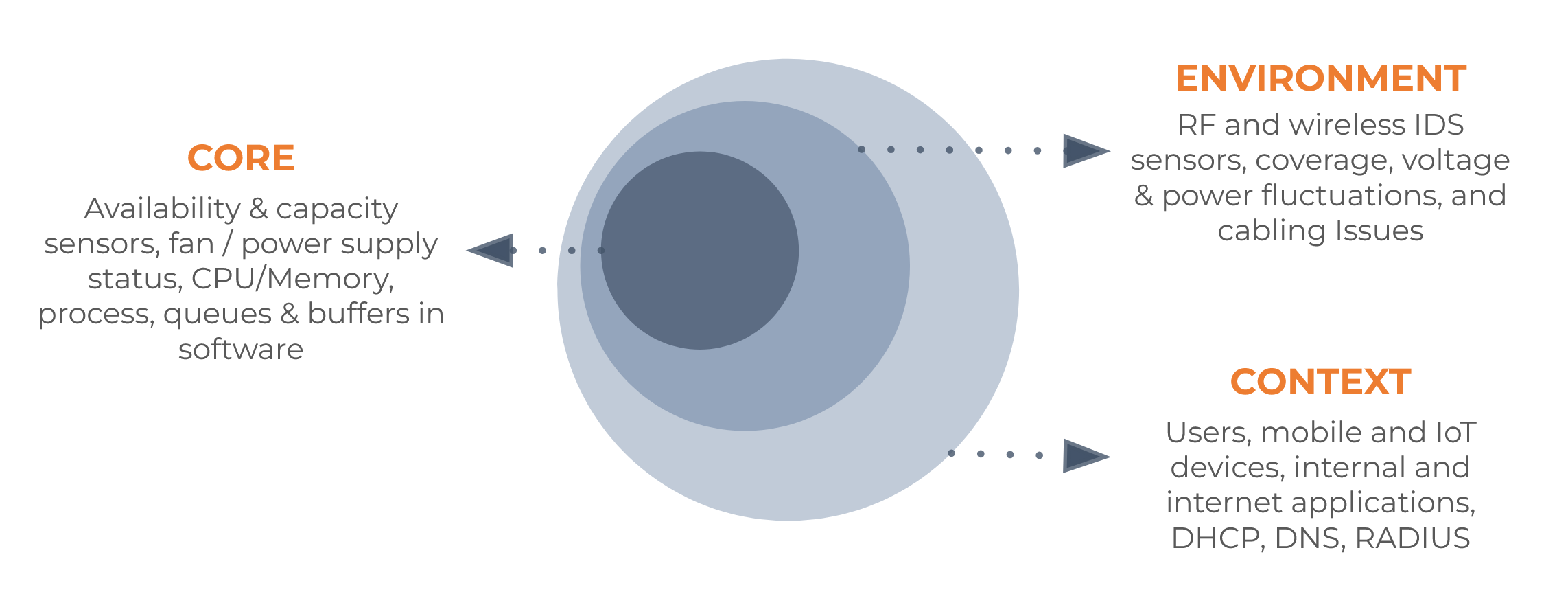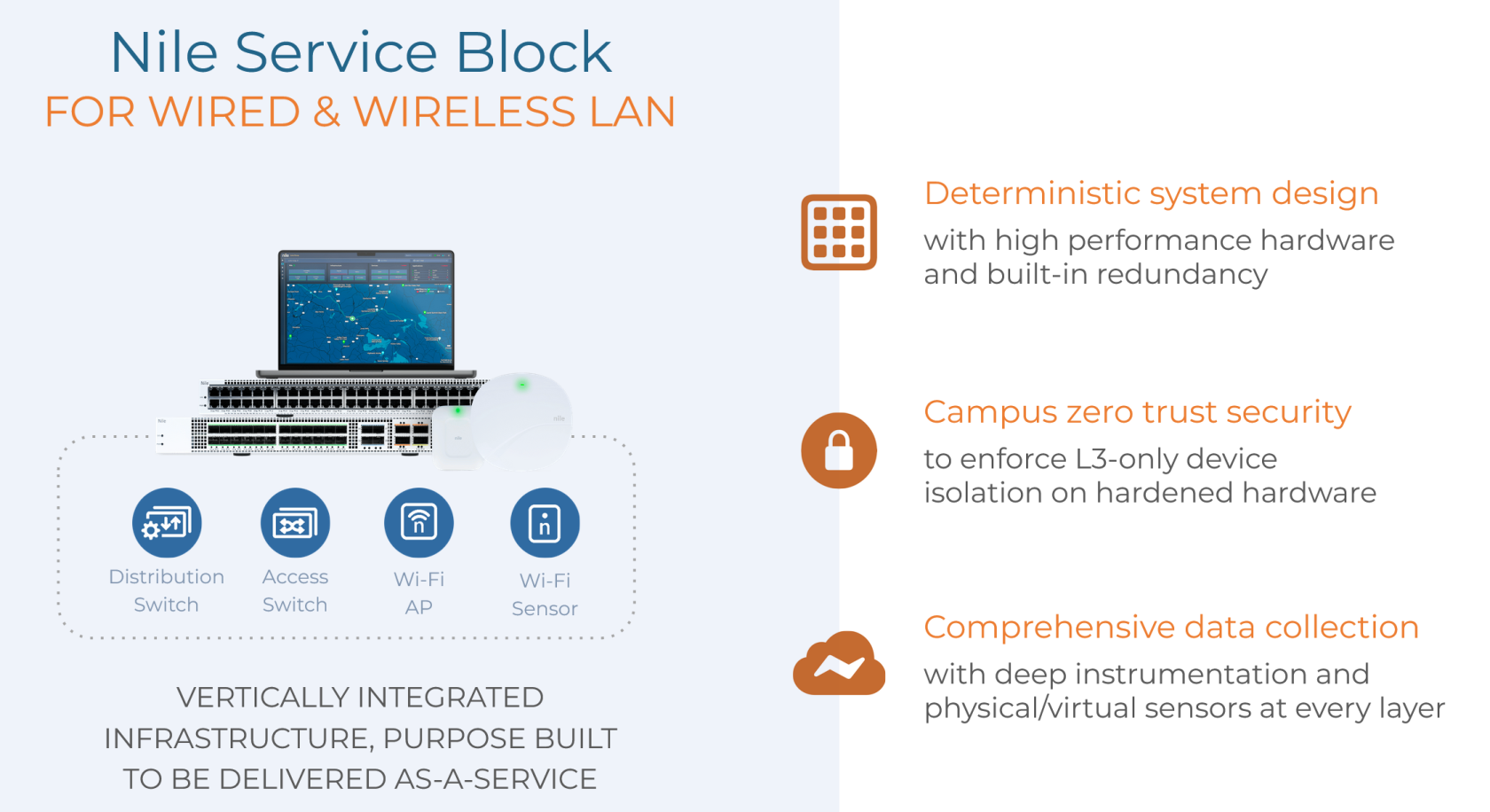What is the Nile Architecture?
To effectively deliver the Nile Access Service a new approach to enterprise network architecture is required. This document will explore this architecture in detail, providing you with the knowledge and understanding......[JR > to be completed]
Core, Environment, Context
The Nile Architecture is based on the concepts of Core, Environment and Context. Let's explore each of these in detail.
Core
When we talk about 'Core' in this context we are referring to the Nile Service Block which provides wired and wireless access infrastructure as a service. Designing our own hardware means we can embed physical and virtual sensors through out the NSB in order to gather the deep intelligence required to deliver fully automated infrastructure.
Environment
The physical Environment where NSB is deployed. When preparing to deploy the Nile Access Service Site Discovery and Survey quantify the environment so that our automated BoM creation and coverage planning delivers the services required to users and devices (Context).PostAn deployment,autonomous vehicle uses an array of sensors to monitor it's surrounding environment, using this data to inform decisions and, if necessary raise alerts. Nile monitors the physicalenvironment andwhere virtualNSB is deployed using a similar model.
Physical Wi-Fi sensors withinmonitor the NSBRF constantly measure the Environment for service affecting deviations.Environment.
Context
In the Nile Architecture, Context refers to the users and devices connected to the NSB, as well as the services and applications being consumed/delivered.
For example; when a wireless user establishes a connection they will be authenticated using RADIUS or other NaaC services. Once authenticated they receive an IP address via DHCP from internal systems or Nile DHCP. The user accesses enterprise cloud applications, requiring DNS.
The NSB continuously monitors application performance, and availability of services like DNS, DHCP, NaaC to ensure SLas are being met.


